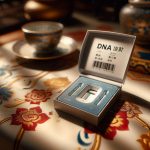Cartesian Therapeutics is at the forefront of battling cancer and autoimmune diseases, thanks to its groundbreaking work in cell and gene immunotherapy. The company’s CEO, Dr. Murat Kalayoglu, recently shed light on how their cutting-edge RNA cell therapy might be the silver bullet we’ve long sought against cancer. With innovation embedded in its DNA, Cartesian Therapeutics is on a mission to kick cancer to the curb for good.
Understanding the company’s background, purpose, and objectives. Exploring the inspiration behind it and its development to date
In 2016, Cartesian embarked on a mission fueled by hope and the desire to make a breakthrough in treating early-stage cancer. Concentrating initially on multiple myeloma, the founders were driven by personal connections to the disease, motivating them to find a solution that could make a real difference from the onset of diagnosis. With backgrounds in healthcare startups and drug development, they recognized an opportunity at the crossroads of RNA therapies and cell therapy.
Unlike traditional approaches that permanently alter cells’ DNA, leading to potential overgrowth and severe side effects such as cytokine release syndrome or neurotoxicity, Cartesian’s RNA Armory℠ offers a novel twist. This platform employs RNA for cell modification, essentially offering temporary changes rather than permanent ones. This innovative method introduces the benefit of controlling how long these modifications last, significantly reducing risks associated with unchecked cell proliferation.
The journey began with ambitions tightly focused on attacking multiple myeloma head-on but quickly evolved beyond those initial bounds. As their research progressed, Cartesian extended its reach into areas outside oncology, targeting diseases like general myasthenia gravis and acute respiratory distress syndrome (ARDS) with their pioneering RNA cell therapies.
Today, Cartesian stands at the forefront of this exciting field not just aiming to introduce first-of-their-kind treatments for frontline cancer but also venturing into uncharted territories like autoimmune diseases and ARDS. Their work signifies not only an advancement in medical science but also carries forward a beacon of hope for patients facing dire diagnoses.
What is RNA cell therapy, in simple terms?
In the expansive world of medical science, gene and cell therapy stands out as a groundbreaking field with the potential to revolutionize how we treat diseases. At its core, gene therapy involves introducing specific DNA into a patient’s body using nanoparticles or similar carriers. This technique aims to alter the patient’s genetic material to combat severe disorders like hemoglobinopathies and immune deficiencies. It’s akin to fixing software bugs in a computer by installing an update – only, in this case, the ‘software’ is human DNA.
On another front, cell therapy takes a slightly different but equally innovative path. Here, scientists tweak cells outside the body using RNA or DNA before reintroducing them into the patient. This method can utilize either cells from the patient (autologous) or from another individual (allogeneic). At Cartesian, our focus leans heavily towards RNA-modified cell therapies rather than those altered with DNA. Why? Because RNA-based treatments offer unique benefits that are pushing us forward in what’s known as adoptive cell therapy.
So why does any of this matter? Well, imagine having the power to correct genetic errors that cause life-threatening diseases or being able to reprogram cells to fight illnesses from within. That’s exactly what gene and cell therapies promise – a future where many of today’s incurable conditions could be treated more effectively or potentially cured outright.
Indeed, while both branches of treatment—gene and cell therapies—offer hope for revolutionary medical breakthroughs; it is important not just for their scientific merit but also for their potential in changing lives across the globe. As pioneers on this journey at Cartesian, exploring RNA-led strategies places us at the forefront of an exciting era in medicine where we’re not just treating symptoms but addressing root causes at their genetic and cellular levels.
Has RNA technology become well-known due to the COVID vaccine?
In a world where medical advancements move at lightning speed, the realm of RNA therapy is no exception. Traditionally, this approach involves administering RNA directly into our system using tiny particles or vectors to carry it inside. Think of it as getting a package delivered straight to your doorstep. A prime example here is the COVID vaccines that use this tech to get RNA inside our cells, teaching them how to fend off viruses by producing specific proteins.
However, this method isn’t without its hiccups. The delivery vehicles, those tiny nanoparticles, often trigger our body’s defense systems like an alarm going off during a sneaky midnight snack raid. This immune response is great for vaccines but can be a stumbling block when treating diseases; after all, you don’t want your body fighting the very thing meant to heal it. Plus, these particles don’t hang around for long in our body, limiting their effectiveness over time.
But there’s a twist in the tale with an innovative technique on the rise: using living cells themselves as the delivery guys. Imagine turning cells into secret agents that can sneak RNA past our immune defenses and keep pumping out therapeutic proteins right where they’re needed for longer stretches of time. This isn’t just theoretical; at Cartesian, we’re pushing boundaries by not only hitching multiple RNA therapies onto these cellular agents but also turning them into mini-factories churning out healing compounds on-site.
This bold strategy sidesteps many challenges traditional methods face, from dodging immune detection to achieving prolonged treatment effects without needing frequent top-ups. It’s like having an undercover healer embedded deep within, tirelessly working against illness from the inside out, truly a glimpse into future medicine’s potential!
What do you know about your tech?

Our company, at the forefront of biotechnological advancements, is currently developing three groundbreaking treatments aimed at combating specific diseases. Among our innovative projects are:
– Descartes-08, designed to combat myasthenia gravis and multiple myeloma.
– Descartes-11, focused on attacking frontline multiple myeloma.
– Descartes-30, aimed at treating acute respiratory distress syndrome (ARDS).
The first two treatments utilize a cutting-edge approach by reengineering the patient’s own T cells with a special molecule that targets critical receptors in certain cancer cells. This method, using one’s own modified cells, represents an exciting leap forward in personalized medicine.
On another front, Descartes-30 ventures into uncharted territory by employing a completely different cell type derived from healthy donors. These cells are equipped with dual therapeutic proteins designed to tackle ARDS while also holding potential against autoimmune and cardiovascular diseases.
Our ambition doesn’t end here; we’re exploring even more complex treatments involving both self-derived and donor-derived cells combined with multiple targeting proteins. These therapies could revolutionize how we treat a broad range of diseases by working within the body over extended periods.
As pioneers in this field, we’re optimistic about bringing these sophisticated solutions from the lab bench to bedside, offering new hope for patients worldwide in the coming years.
What sets this cancer treatment apart from others?
Creating new treatments for cancer is a slow and complex process. In the past, researchers had to go through several steps: finding a drug, testing it in labs and on animals, getting the green light from regulatory bodies to try it out on humans, checking if it’s safe for healthy people, and finally seeing if it actually helps patients with cancer. This whole journey isn’t just long; it’s also incredibly costly.
When scientists discover a drug that works, they don’t stop there. They often have to test how this drug works when combined with others since using multiple drugs together can potentially be more effective against cancer. However, exploring these combinations adds another layer of time and expense to an already demanding process.
Enter the RNA Armory℠, our innovative solution that’s changing the game in cancer treatment development. We’re taking cell therapy—a method where cells are used as medicine—to a whole new level by engineering cells to carry multiple therapeutic agents at once. This not only allows us to target different aspects of a disease simultaneously but also gives us unique insights into how these combo treatments work against diseases in ways old-school methods just can’t match.
Our approach offers fresh perspectives on combining therapies by manipulating cells themselves—a technique brimming with potential for uncovering better ways to fight various diseases.
How might this become a common treatment method in the future?
In the realm of biotechnology, the effectiveness and safety of novel therapies are paramount. When a new treatment proves to be both efficient and secure, it quickly becomes preferred over older methods. This dynamic paves the way for innovative therapeutics to not only emerge but also potentially become the new norm in medical care.
Emerging treatments offer hope as either independent solutions or enhancements to current healthcare practices. Their unique approach to addressing specific health issues within certain patient groups marks them as significant advancements. This uniqueness carries the promise that they might one day set new benchmarks in healthcare standards, revolutionizing how we treat various ailments and conditions.
What does the future look like for cancer patients?
Optimism is high regarding the outlook for patient care. The pace at which new treatments have been advancing lately is nothing short of extraordinary. Specifically, cell therapy is emerging as a game-changer, amalgamating various drug development strategies into potent integrated treatments.
The continuous exploration and understanding of cell engineering are propelling us towards more intricate and effective treatment options. This evolution in therapy development heralds a promising horizon for patient health outcomes.



















